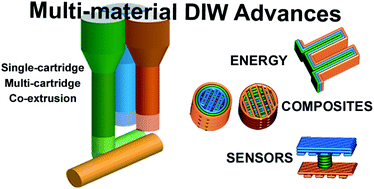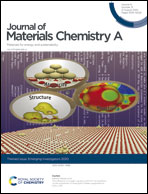Direct ink writing advances in multi-material structures for a sustainable future
Abstract
Novel manufacturing techniques such as additive manufacturing (AM, also referred to as 3D printing) will play a critical role in building a sustainable future. AM will reduce waste, energy consumption and production time by eliminating the need to assemble components. It will also enable the mass customization of complex devices. To reach their full potential, additive manufacturing technologies should be able to combine different materials in a single processing step. Although the development of multi-material printing is in its infancy, it could have a massive impact in fields as diverse as energy storage and generation, electronic devices, healthcare or structural composites to name a few. Here we provide a critical perspective on the advances and potential of multi-material printing using direct extrusion-based printing, also known as direct ink writing (DIW) or robocasting. We will show examples of devices and structures combining a wide range of materials from ceramics to metals, polymers and carbon with particular focus on three promising applications: energy storage, lightweight composites and sensors. The goals are to assess the progress made so far, to point out specific challenges and areas for further development and to provide guidelines to those interested in multi-material DIW.

- This article is part of the themed collections: Journal of Materials Chemistry A Recent Review Articles and Journal of Materials Chemistry A Emerging Investigators


 Please wait while we load your content...
Please wait while we load your content...